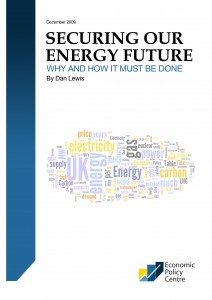Yesterday, I was asked to take part in a panel discussion at a conference organised bythe excellent Association of Electricity Producers. The theme for the day was the vast sums projected that will have to be spent by the utilities and National Grid in order to meet the 2020 renewables target et al (basically a ramping up from 5% to over 30% renewable electricity by 2020);
“The £200 billion generation game: Can the electricity market deliver our energy policy goals?”
To which of course, my answer was an emphatic no. The money is just not there. And no one in the audience seemed to register even a flicker of disagreement. A real shame then that none of this politicians are giving it a mention during the general election, less still the leaders TV debate last night.
However where I respectfully disagreed with my fellow panellsts and some in the audience was on the security of future UK gas supplies and the implication of the non-delivery of renewables targets around the middle of the next decade when the energy gap is forecast to kick in. It seems to me fairly obvious that the coal fired power stations due to close down in 2015 thanks to the EU’s Large Combustion Plant Directive will have to remain open for a few more years until cleaner plant becomes available and the 2020 target will have to be renegotiated.
However some of those in the gas industry would disagree. Their view is that because plenty of CCGT and LNG terminal capacity is being installed, the gas will be also there. But I would have much more confidence in their rosy predictions if I didn’t know that the UK will have to compete in the spot market for LNG cargoes, which last year were 87% sewn up in long-term supply contracts and destined mostly for the Pacific Basin.
Thanks to the West’s recession, US shale gas discoveries and a consequent LNG supply surge, there’s no denying that there is a global gas glut at the moment. Yet as it is not yet a truly fungible commodity, it’s a very long way from solving local and pricey shortages which the UK is overexposed to. We are still at the wrong end of European gas pipelines, a long way from the LNG target market of the Pacific Basin and demand is going to rise, not fall, especially with a population destined to reach 70m by 2030.
That’s why I fear, due to our own mismanagement, the UK’s power supply just might be at the mercy of external events over which we have little control from 2015/16.





